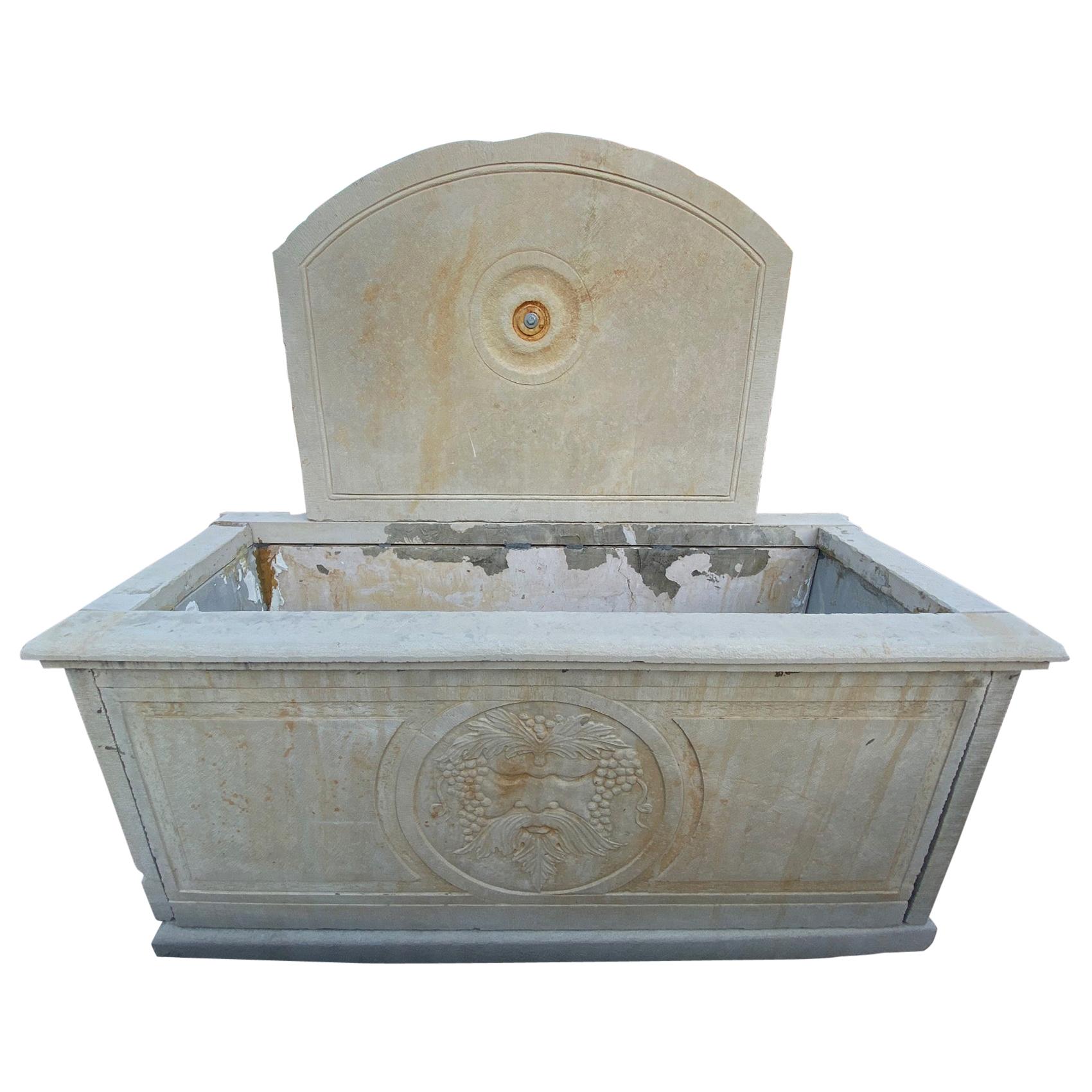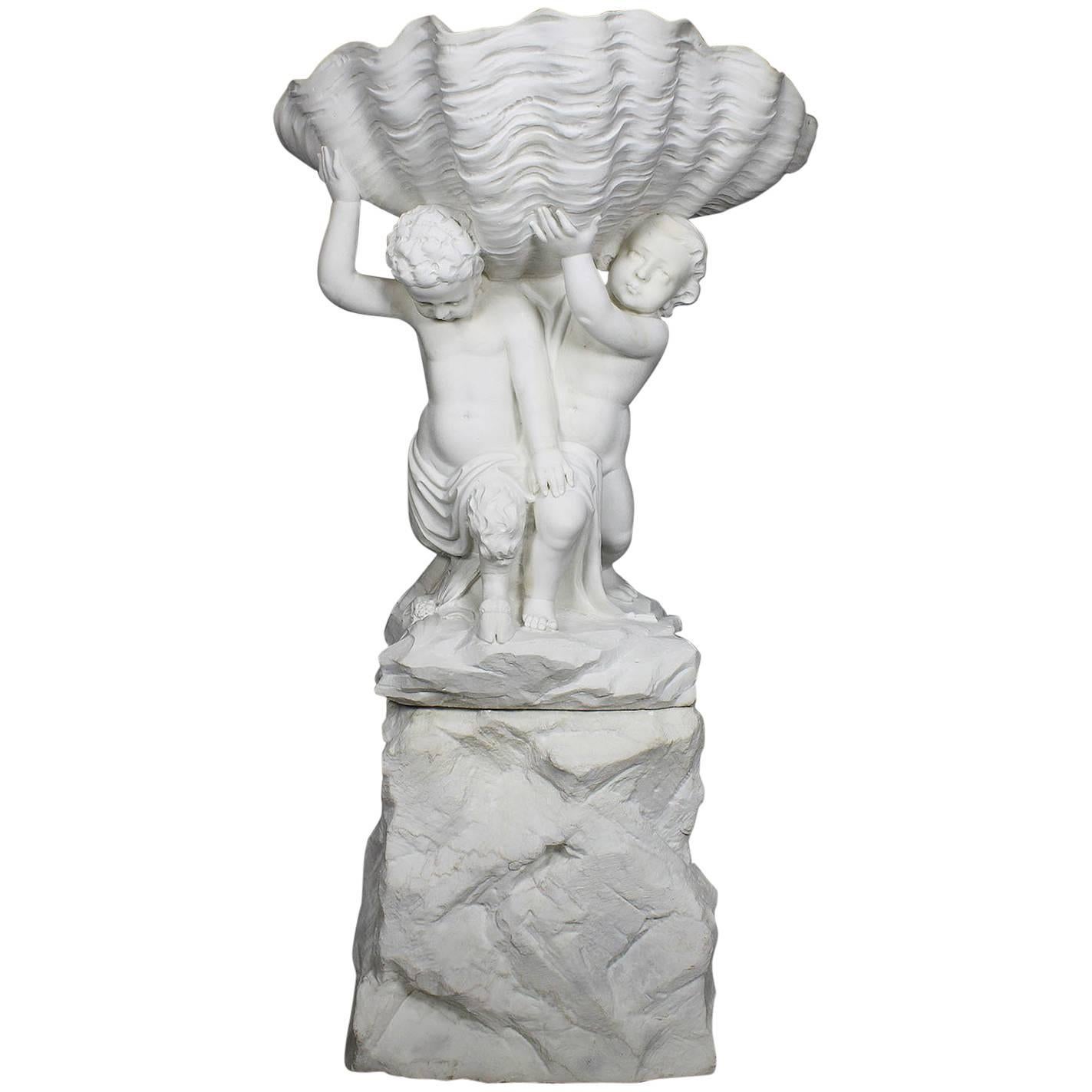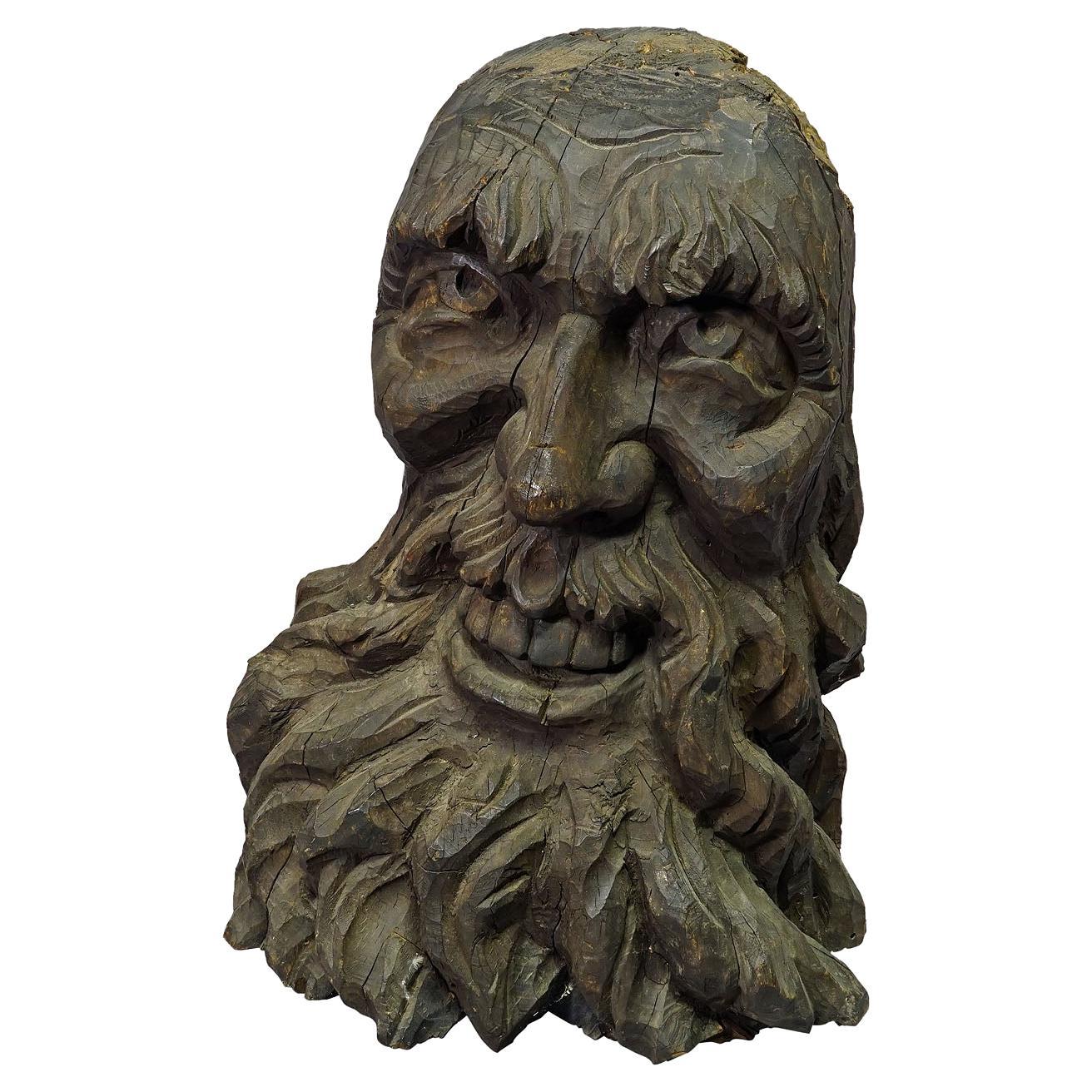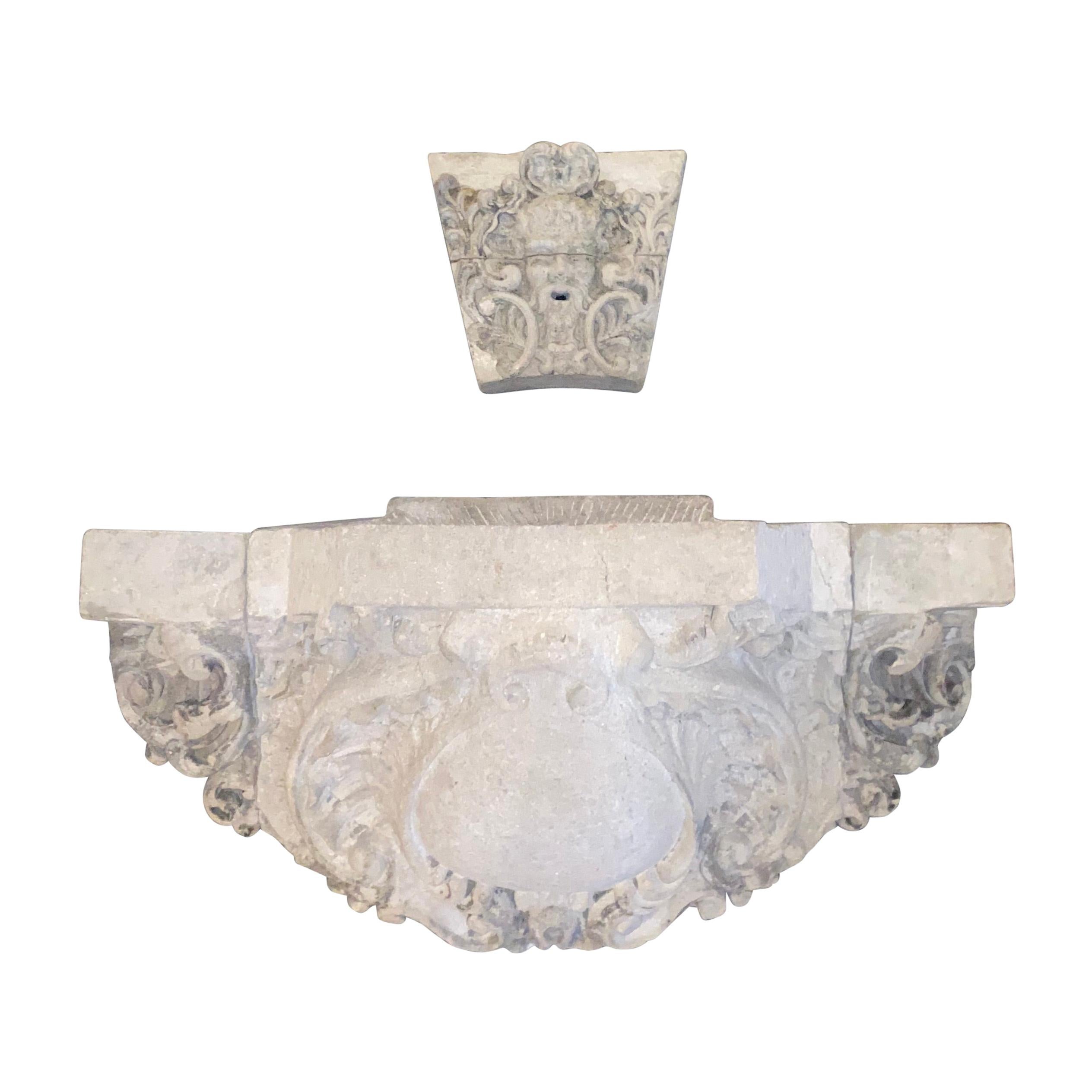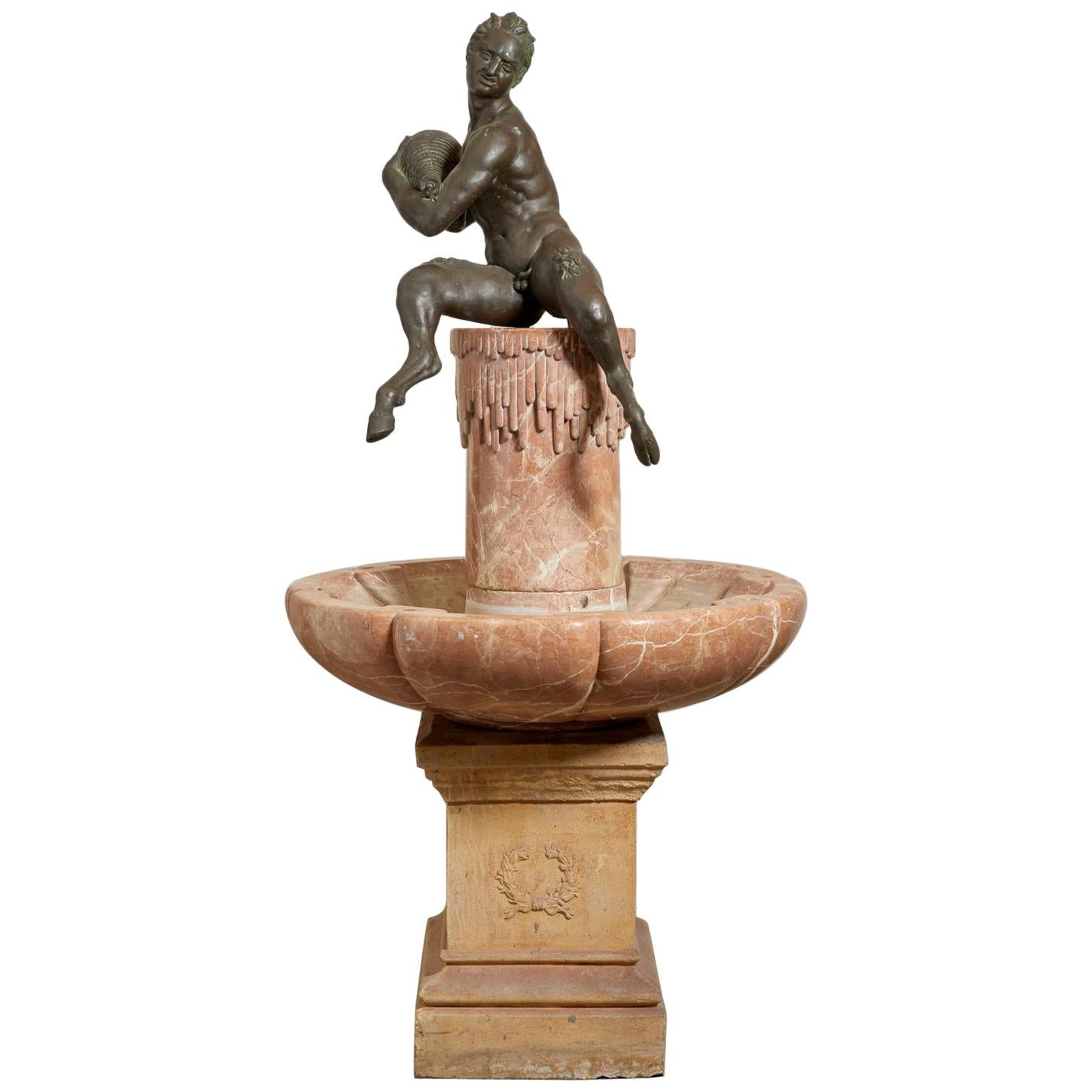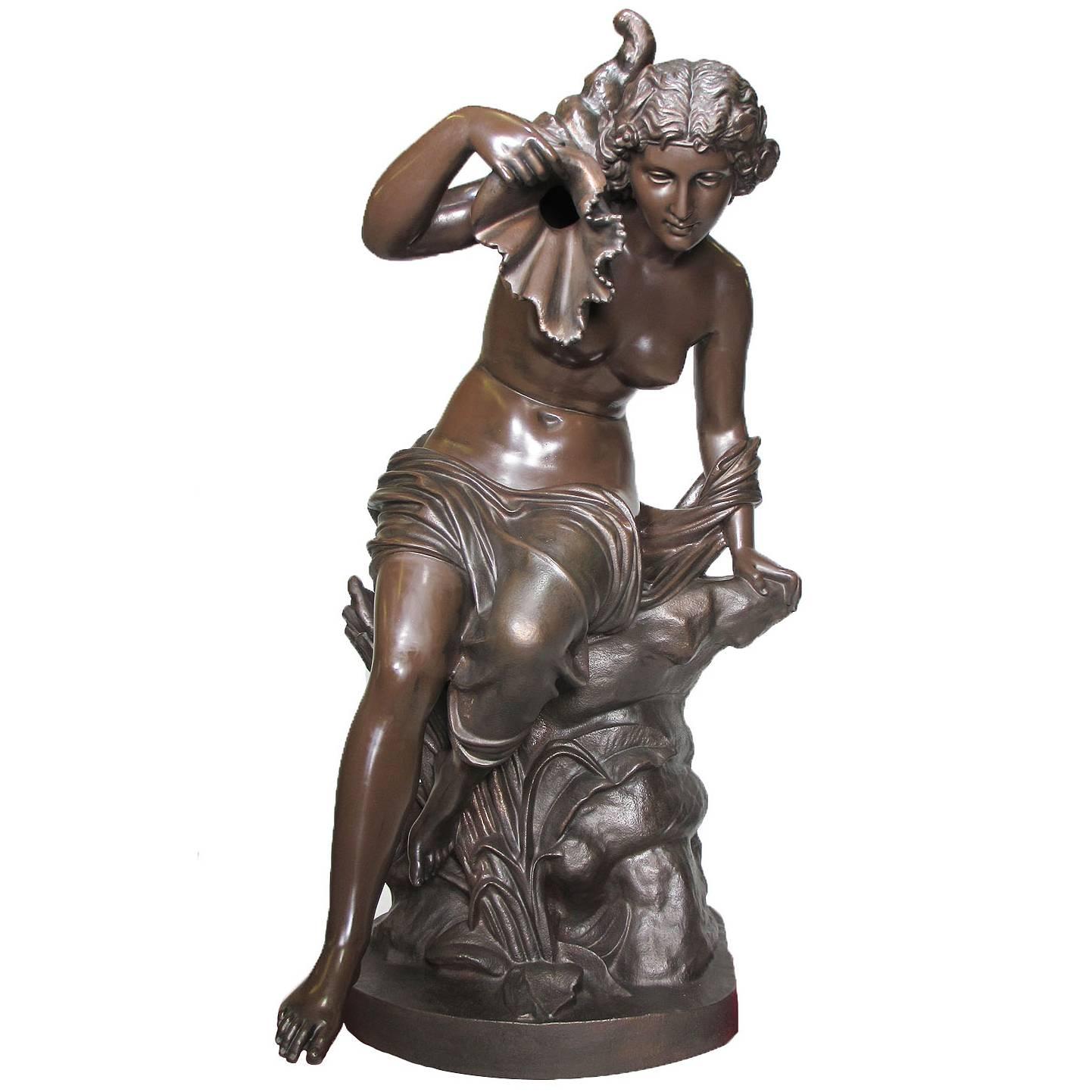Items Similar to 19th Century Large Circular Garden Fountain Neptune, Italian Limestone Fountain
Want more images or videos?
Request additional images or videos from the seller
1 of 16
19th Century Large Circular Garden Fountain Neptune, Italian Limestone Fountain
About the Item
Monumental antique Italian three-tiered garden fountain. Four Cariatidi surround the center base raising the water which spells from the waved shells. The second tier is supported by four dauphin grotesques which form the second tier. The top bowl is adorned by Neptune holding a dolphin which represents prosperity. The enormous basin is of quatre feuilles shapes. Wear consistent with age and use, circa 1830, Italy.
- Dimensions:Height: 274.8 in (698 cm)Width: 187.5 in (476.25 cm)Depth: 187.5 in (476.25 cm)
- Style:Baroque (In the Style Of)
- Materials and Techniques:
- Place of Origin:
- Period:
- Date of Manufacture:circa 1830
- Condition:Wear consistent with age and use. Basin H 18.5 x W 9".
- Seller Location:West Palm Beach, FL
- Reference Number:
About the Seller
5.0
Vetted Seller
These experienced sellers undergo a comprehensive evaluation by our team of in-house experts.
Established in 1998
1stDibs seller since 2015
Typical response time: 2 hours
- ShippingRetrieving quote...Ships From: West Palm Beach, FL
- Return PolicyThis item cannot be returned.
More From This SellerView All
- 21st Century French Octagonal Central Limestone FountainLocated in West Palm Beach, FLThe very traditional octagonal garden fountain was hand carved in limestone after an 18th Century original (fountain du reservoir) and can still be seen nowadays in the French villages. This Provencal water fountain has a square paneled central column surmounted by a decorative 8” sphere. It has a decorative panel on two sides and the water exits out of two hand sculpted rosettes. In addition we offer two brass water spout...Category
21st Century and Contemporary French French Provincial Fountains
MaterialsLimestone
- 19th Century French Pair of Antique Limestone Cherubs - Les Anges de la MusiqueLocated in West Palm Beach, FLAn antique French pair of 19th Century Baroque Style Cherubs playing instruments and facing each other, in good condition. The left is playing the flute and the right cherub is playing a violin. Beautifully hand carved limestone statues with wings...Category
Antique 19th Century French Baroque Figurative Sculptures
MaterialsLimestone
- 20th Century Italian Carved Limestone Male Torso - Large Vintage SculptureLocated in West Palm Beach, FLA tall limestone statue of a male torso carved in the Classical style. The details remind of the Italian Renaissance period. The large vintage Italian male torso sculpture is positio...Category
20th Century Italian Renaissance Figurative Sculptures
MaterialsLimestone
- 19th Century Rosso Marble Head of Zeus - Antique Italian DecorLocated in West Palm Beach, FLAn antique hand carved Rosso Verona marble sculpture or mask of Zeus with detailed carvings, in good condition. Similar can be viewed at the temple collection in the British museum i...Category
Antique 19th Century Italian Renaissance Statues
MaterialsMarble
- 19th Century Italian Neoclassical Style Torso, Antique Carrara Marble DécorLocated in West Palm Beach, FLAn antique Italian torso of a Roman male in hand carved Carrara marble and mounted onto a black marble base, in good condition. The Italian décor represe...Category
Antique Late 19th Century Italian Neoclassical Abstract Sculptures
MaterialsCarrara Marble
- 19th Century Small Trio of Antique Italian Nutwood Poet BustsLocated in West Palm Beach, FLA set of antique statuettes Italian Poets left to right Ludovico Ariosto, Torquato Tasso, Dante Alighieri, in good condition. The three busts of thes...Category
Antique 19th Century Italian Busts
MaterialsAlabaster
You May Also Like
- 19th Century Limestone Fountain from ItalyLocated in Dallas, TXThis limestone fountain origins from Italy, circa 1880.Category
Antique 19th Century Italian Fountains
MaterialsLimestone
- Italian 19th Century Carved Carrara Marble Figural Fountain Jardinière PlanterBy Giovanni Battista LombardiLocated in Los Angeles, CAA very fine Italian 19th century carved Carrara marble figural fountain "Jardinière" modelled as a standing Putto and a Satyr supporting a sea-sh...Category
Antique 19th Century Italian Baroque Figurative Sculptures
MaterialsCarrara Marble
- Wooden Carved Black Forest Garden Fountain Water Spout 19th centuryLocated in Berghuelen, DEWooden Carved Black Forest Garden Fountain Water Spout 19th century A large Black Forest wooden carved water spout featuring "Ruebezahl", which is the mountain spirit of the giant m...Category
Antique Late 19th Century German Black Forest Fountains
MaterialsWood
- 19th Century French Limestone Wall FountainLocated in Beervelde, BEOne of a kind French wall fountain in limestone. Typical LXIV style of the 19th century. Amazing and grand fountain for a bespoke luxury lifestyle design. The head stone measures: 7...Category
Antique 19th Century French Louis XIV Fountains
MaterialsLimestone
- 19th Century French Marble and Bronze FountainLocated in Essex, MA19th century French marble and bronze fountain. Seated satyr on marble column with marble shell basin. Later cast stone plinth. Wonderful garden ele...Category
Antique Late 19th Century French Louis XV Figurative Sculptures
MaterialsMarble, Bronze
- Large French 19th Century Cast-Iron Fountain Figure of a Seated Nude MaidenBy J.J. Ducel Me de Forges 1Located in Los Angeles, CAA Fine and Large French 19th Century Cast-Iron Fountain Figure Modeled as a Nude Maiden Seated on a Rocky Outcrop Holding a Cornucopia in Her Raised Right Hand, by J.J Ducel. Cast-Signed "J.J. DUCEL Me de FORGES, PARIS". Circa: Paris, 1880. A retailer of fine cast-iron ornaments, J. J. Ducel was recorded as supplying cast-iron works through Paris as early as 1810 in the Pas-de-Calais. The factory was sold in 1878 to the Fonderie de la Haute-Marne and all of the firm's models were subsequently bought by the Val d'Osne foundry. However, prior to the firm's sale, critics at the 1867 Paris Exposition Universelle proclaimed that "Ducel is the great manufacturer of works in cast-iron, to whom Paris is so largely indebted for the grace and elegance that supply so many of the adornments of its streets". Ducel, Val d'Osne and other associated foundries produced both bronze and cast-iron statuary. Cast-iron is corrosive, whereas non-ferrous bronze does not suffer the same detrimental effects of weathering and is therefore a superior and more expensive material. Height: 51 1/2 inches (130.8 cm) Width: 22 inches (55.9 cm) Depth: 30 inches (76.2 cm) The foundry of Val d'Osne became highly regarded for the varied nature and quality of its castings in the second half of the 19th century. Commonly known after 1870 as simply Val D'Osne, the company was originally founded by J.P.V. André in Val d'Osne 1835 and developed rapidly, absorbing smaller foundries in the Haute-Marne area east of Paris. The foundry contributed to the London International Exhibition of 1851, where a bronze fountain cast with classical figures attracted much attention. André also specialised in fancy castings and architectural fittings. His Paris adress was at 14 Rue Neuve, Menilmontant. In 1855 the Barbezat & Cie Foundry was born out of the André workshop. In 1867 Barbezat & Cie changed its name to Houille & Cie. Then, in 1870, it changed its name to Société Anonyme du Val d'Osne. With the change of name came the change of casting mark and adress: Fonderies d'Art du Val d'Osne, 58 Bd Voltaire, Paris or simply Val d'Osne. Cast-iron had been in production during the 18th century but its inferior status to the more fashionable and delicate wrought-iron had generally confined its use to architectural work. By the early 19th century, however, rapid developments of the Industrial Revolution combined with the simultaneous burgeoning of a new middle class provided the impetus for a dramatic expansion in its application and in a short space of time a proliferation of iron foundries across Europe and America thrived on the production of everything from inkstands to railway stations. The use of cast-iron for garden ornament became particularly widespread at this time, as the possibilities for its mass-production at a fraction of the cost of bronze made it the material of choice for indoor/outdoor statuary...Category
Antique 19th Century French Classical Greek Figurative Sculptures
MaterialsIron
Recently Viewed
View AllMore Ways To Browse
Large Garden
Large Garden Elements
Circular Patio
Antique Hand Basin
Antique Grotesque
Grotesque Antique
Antique Garden Four
Italian Limestone
Dolphin Form
Antiques Italian Patio Furniture
Large Dolphin
Italian Grotesque
Spell Antique
Used Neptune Furniture
Limestone Basin
Three Dolphins
Antique Garden Shells
Water Fountain Basin
